
Jamshid Amouzegar was an Iranian economist and politician who was prime minister of Iran from 7 August 1977 to 27 August 1978 when he resigned. Prior to that, he served as the minister of interior and minister of finance in the cabinet of Amir-Abbas Hoveida. He was the leader of Rastakhiz Party during his tenure as prime minister of Iran.
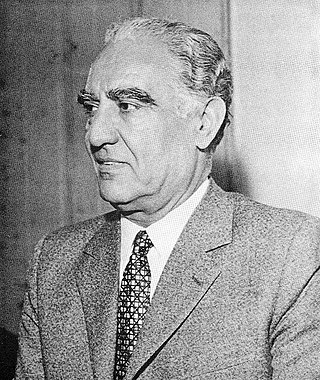
Manouchehr Eghbal was an Iranian physician and royalist politician. He was the Prime Minister of Iran from 1957 to 1960.

Hasan Ali Mansur was an Iranian politician who served as Prime Minister from 1964 to 1965. He served during the White Revolution of the Shah Mohammad Reza Pahlavi and was assassinated by a member of the Fada'iyan-e Islam.

Jafar Sharif-Imami was an Iranian politician who was prime minister from 1960 to 1961 and again in 1978. He was a cabinet minister, president of the Iranian Senate, president of the Pahlavi Foundation and the president of the Iran chamber of industries and mines during the reign of Shah Mohammad Reza Pahlavi.
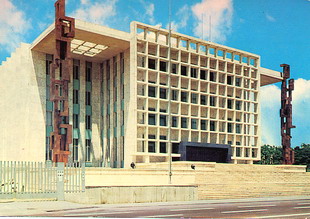
The Senate was the upper house legislative chamber in Imperial State of Iran from 1949 to 1979. A bicameral legislature had been established in the 1906 Persian Constitutional Revolution but the Senate was not actually formed until after the 1949 Constituent Assembly election, as an expression of Shah Mohammad Reza Pahlavi's desire for more political power. The Senate was filled mainly with men who were supportive of the Shah's aims, as intended by the Shah. Half of the sixty seats in the senate were directly appointed by the Shah, fifteen represented Tehran, and the rest were elected from other regions.
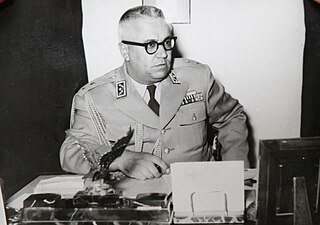
Ali-Akbar Zargham was a military officer and held several cabinet posts in the cabinets of Manouchehr Eghbal and Jafar Sharif-Emami.

Parliamentary elections were held in Iran between 30 July and 20 August 1960.

Amir Khosrow Afshar was an Iranian diplomat, who served as the minister of foreign affairs of Iran during the Shah era from 1978 to 1979.
The following lists events that happened during 1960 in the Imperial State of Iran.
Events from the year 1957 in Iran.
Party of Nationalists or Nationalists' Party was a conservative political party in Pahlavi era Iran, and government majority party from 1957 to 1960. The party was founded in 1957 by Manouchehr Eghbal on orders directed by Shah to initiate a two-party system. Its opposition was liberal People's Party.

Isa Sedigh was minister of education in Iran, and the third president of the University of Tehran.
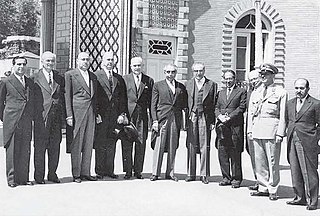
Ali Amini was appointed to rule by decree as the Prime Minister of Iran on 5 May 1961, succeeding Jafar Sharif-Emami. His cabinet was approved on 9 May 1961.

The Ministry of the Royal Court was an organization in Iran that acted as an intermediary between the Shah of Iran and government branches, including the cabinet and the parliament. It was extensively powerful during Pahlavi dynasty, and had an executive arm named the 'Special Bureau'.

Nader Batmanghelidj (1904–1998) was an Iranian military officer who served in various military and government posts. He also served as the ambassador of Imperial Iran to Pakistan and Iraq.
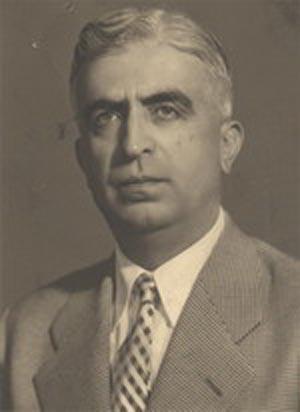
Hassan Akhavi was an Iranian military officer who played an active role in the overthrown of Prime Minister Mohammad Mosaddegh in 1953. He briefly served as the minister of agriculture in the period 1957–1959 and retired from military offices and politics. Following the regime change in Iran in 1979 he settled in the United States.
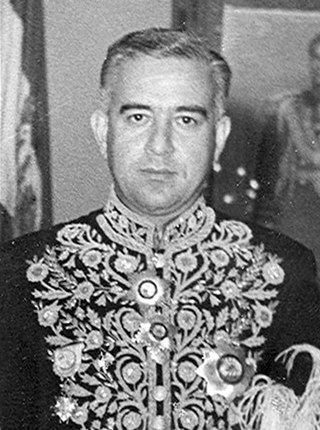
Abdolreza Ansari (1925–2020) was an Iranian engineer, bureaucrat and politician who held various government posts. He served as minister of labor (1959–1960) and minister of interior (1966–1969).
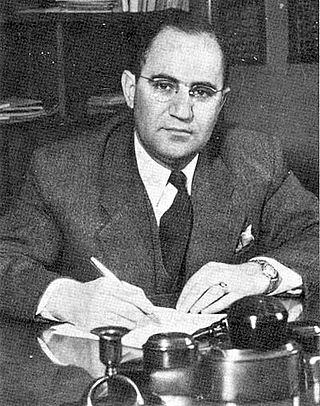
Jahanshah Saleh (1905–1995) was an Iranian physician and politician. He served as health minister and education minister in the 1950s and 1960s. He was the obstetrician of Queen Farah Diba, spouse of Shah Mohammad Reza Pahlavi.
Ali-Asghar Naghdi (1895–1966) was an Imperial Army general and served as the minister of defense in the governments of Hossein Ala', Mohammad Mosaddegh, Jafar Sharif-Emami, Ali Amini and Asadollah Alam.
Manouchehr Azmoun was a member of the 24th National Assembly, Minister of Labor and Social Affairs in Amir-Abbas Hoveyda Cabinet, Governor of Fars in the cabinet of Jamshid Amouzegar and then Minister of State in the Cabinet of Jafar Sharif Emami. He was executed on 9 April 1979. He held a PhD in Political Economy and Social Sciences from the University of Cologne, Germany.















